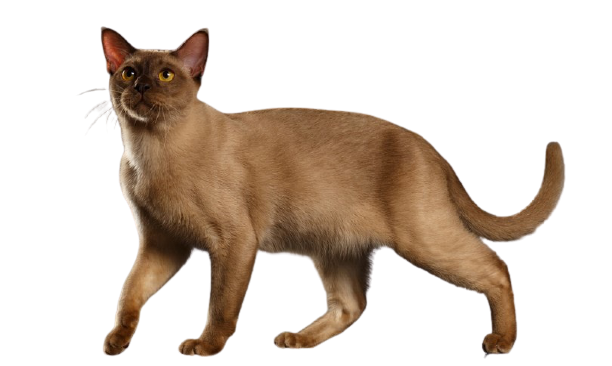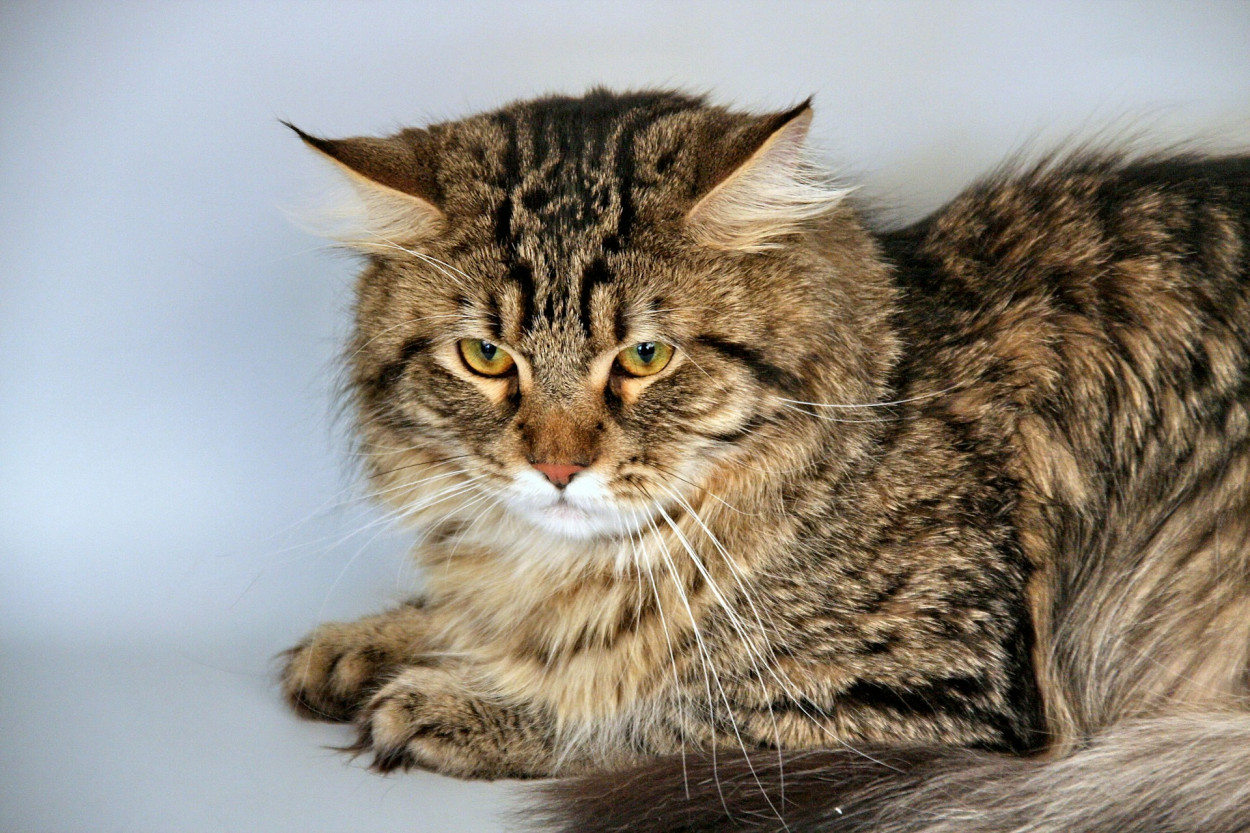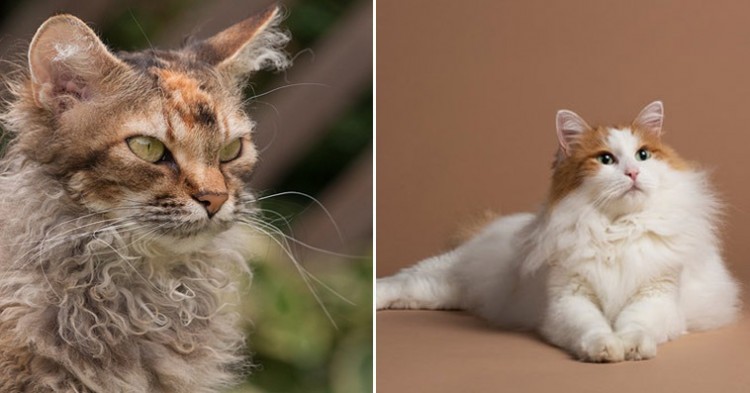
Burmese
USD $1000 - $1500 Price Avg.
Small, Medium
Size
Yes
Lap Cat
15 to 16 years
Lifespan
Breed Information
| Popularity/Rank | 18 |
|---|---|
| Name | Burmese |
| Other names | None |
| Origin | Burma |
| Origin | Thailand |
| Size | Small, Medium |
| Coat | Glossy, Satin, Silky, Short Hair |
| Lap Cat | Yes |
| Lifespan | 15 to 16 years |
| Temperament |
Gentle, Intelligent, Interactive, Lively, Playful, Social, Curious 1. Gentle: The Burmese is a gentle cat, known for being affectionate and loving with their family. They are also intelligent and interactive, making them great companions. They are lively and playful, but also have a calm side that makes them perfect for cuddling. 2. Intelligent: The Burmese is an intelligent cat breed that is known for being interactive and curious. They are quick learners and can be trained to do tricks or behaviors. They love to play games and will often keep themselves entertained with toys or puzzles. 3. Interactive: The Burmese is an interactive cat breed that loves to be around people. They are curious and inquisitive, always exploring their environment. They are also very social, enjoying the company of other cats and animals. 4. Lively: The Burmese is a lively cat breed that loves to play and have fun. They are active and energetic, always on the go. They are also very social, enjoying the company of other cats and animals. 5 Playful: The Burmese is a playful cat breed that loves to play with toys and chase balls of yarn around the house. They are also very curious and inquisitive, always exploring their environment. they can be trained to do tricks or behaviors as they are quick learners.. 6 Social: The Burmese is a social cat breed that enjoys the company of other cats and animals..They love to play games and will often keep themselves entertained with toys or puzzles.. 7 Curious: The Burmese is a curious cat breed that loves to explore their environment..They are also very inquisitive, always asking questions about everything they see.. |
| Weight | Female: 6 - 10 pounds, Male: 8 - 12 pounds |
| Colors | Champagne, Platinum, Sable, Blue |
| Kitten Prices |
USD $1000 - $1500
Burmese kitten prices can range from $1000 to $1500 USD. The price of a Burmese kitten will depend on the breeder, as well as the reputation of the breeder. The price may also be affected by the parents of the kitten, as well as the quality of the kitten. When choosing a Burmese cat, it is important to consider all of these factors in order to get the best possible value for your money. |
Breed Characteristics
| Adaptability | |
|---|---|
| Affection Level | |
| Child Friendly | |
| Dog Friendly | |
| Energy Level | |
| Grooming | |
| Health Issues |
Conjunctivitis, gingivitis, respiratory infections, ear infections, urinary tract infections, feline leukemia, feline immunodeficiency virus, feline infectious peritonitis, ringworm Is Burmese cat Hypoallergenic? There is no definitive answer to this question as everyone's allergies are different. Some people may find that they are allergic to Burmese cats, while others may not have any problems. The best way to determine if you are allergic to a particular cat is to spend some time around them and see if you have any reaction. 1. Conjunctivitis Conjunctivitis, or pink eye, is a common eye condition in cats. It is usually caused by a bacterial or viral infection, but can also be caused by allergies or irritants. Symptoms include red, watery eyes, squinting, and discharge. Treatment typically involves antibiotics or anti-inflammatory drugs. 2. Gingivitis Gingivitis is a common oral health problem in cats. It is caused by plaque and tartar buildup on the teeth, which leads to inflammation of the gums. Symptoms include bad breath, drooling, and difficulty eating. Treatment typically involves professional teeth cleaning and daily brushing. 3. Respiratory Infections Respiratory infections are a common health problem in cats. They are usually caused by viruses, but can also be caused by bacteria or allergies. Symptoms include coughing, sneezing, and difficulty breathing. Treatment typically involves antibiotics or anti-inflammatory drugs. 4. Ear Infections Ear infections are a common health problem in cats. They are usually caused by bacteria or allergies. Symptoms include itching, head shaking, and discharge from the ears. Treatment typically involves antibiotics or anti-inflammatory drugs. 5. Urinary Tract Infections Urinary tract infections are a common health problem in cats. They are usually caused by bacteria. Symptoms include increased urination, straining to urinate, and blood in the urine. Treatment typically involves antibiotics. 6. Feline Leukemia Feline leukemia is a serious viral infection that can be deadly in cats. It is spread through contact with infected saliva, blood, or feces. Symptoms include weight loss, lethargy, and fever. There is no cure for feline leukemia, but treatment can help prolong a cat's life. 7. Feline Immunodeficiency Virus Feline immunodeficiency virus is a serious viral infection that can be deadly in cats. It is spread through contact with infected blood or saliva. Symptoms include weight loss, lethargy, and fever. There is no cure for feline immunodeficiency virus, but treatment can help prolong a cat's life. 8. Feline Infectious Peritonitis Feline infectious peritonitis is a serious viral infection that can be deadly in cats. It is spread through contact with infected bodily fluids. Symptoms include weight loss, lethargy, and fever. There is no cure for feline infectious peritonitis, but treatment can help prolong a cat's life. 9. Ringworm Ringworm is a common fungal infection that can affect both cats and humans. It is spread through contact with infected skin or hair. Symptoms include bald patches, itching, and redness. Treatment typically involves antifungal drugs. |
| Intelligence | |
| Shedding | |
| Social Needs | |
| Stranger Friendly | |
| Vocalization | |
| Health Care |
Burmese cats are a relatively healthy breed, but like all cats, they are susceptible to certain health problems. Some of the most common health problems seen in Burmese cats include respiratory infections, eye problems, and heart disease.
Respiratory infections are the most common health problem seen in Burmese cats. These infections are usually caused by a virus, and they can be very serious, especially in young kittens. Burmese cats are also prone to eye problems, such as conjunctivitis and glaucoma. Heart disease is another common health problem in this breed. Fortunately, there are many things you can do to help keep your Burmese cat healthy. One of the most important things you can do is to have your cat vaccinated against the most common diseases. You should also take your cat to the vet for regular checkups and screenings. And, of course, be sure to provide your cat with a nutritious diet and plenty of exercise. |
History
The Burmese cat is a domestic cat breed that originated in Southeast Asia. It is thought to be descended from the sacred cats of Burma, and was brought to the United States in the 1930s. The breed almost became extinct in the 1950s, but was revived through careful breeding programs. Today, the Burmese is one of the most popular cat breeds in the world.
The exact origins of the Burmese are unknown, but it is thought that they are descended from sacred cats kept by Buddhist monks in Burma. These cats were highly prized for their good luck properties, and were often given as gifts to royalty and dignitaries. In 1871, British soldiers stationed in Burma brought a number of these cats back to England with them.
The first recorded mention of a “Burmese cat” was in 1885, when one was shown at a cat show in London. However, it wasn’t until 1930 that the breed was formally recognized as its own distinct type. In that year, two Burmese cats were imported to America by Dr. Joseph Cheesman Thompson. He named them “ Wong Mau ” and “ Tai Mau ” after their place of origin.
Thompson began breeding Wong Mau and Tai Mau together, and eventually developed a new type of Burmese that he called the “ American Shorthair Burmese .” This new breed was different from its Asian ancestors in several ways, including having shorter fur and a more compact body type. However, it still retained the distinctive dark brown coloration that is characteristic of the Burmese breed.
The American Shorthair Burmese quickly became popular in America, and by 1950 there were an estimated 200,000 registered members of the breed. However, this popularity came at a cost – due to careless breeding practices, many American Shorthair Burmese developed health problems such as heart defects and respiratory problems. As a result, their numbers began to decline sharply in the 1950s.
In an effort to save the breed from extinction , a group of dedicated fanciers established a new breeding program using only healthy stock . They also decided to return to the original Asian standard for the breed , resulting in what is now known as the “ Traditional (or Old-Style) Burmese .” This new type of Burmese was first shown publicly in 1966 , and today it is one of the most popular cat breeds in America .
Description
The Burmese cat is a beautiful, unique looking feline that originates from Burma. It is a medium sized cat with a muscular build and short, fine fur that comes in a variety of colors. The most common colors are brown, blue, and lilac. The Burmese cat has large, expressive eyes that are typically green or gold in color. It is a very friendly and social cat breed that loves to be around people and other animals. Burmese cats are also very playful and active, making them great pets for families with children or other pets.
Burmese cats typically have a lifespan of 12-16 years. They are medium sized cats, weighing between 8-12 pounds. The Burmese cat is a very healthy breed with few health problems. However, they are prone to weight gain so it is important to keep them on a healthy diet and provide them with plenty of exercise.
Burmese cats are very adaptable animals and do well in both indoor and outdoor environments. They are also relatively low maintenance cats, requiring only basic grooming such as brushing and nail trimming. Overall, the Burmese cat makes an excellent pet for families or individuals looking for an affectionate and social companion.





